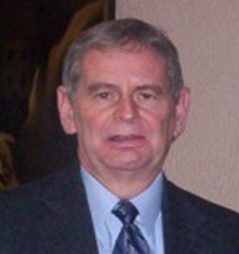Richard Maye lives with Gleason 3+4 prostate cancer and participates in AnCan’s Active Surveillance and Low/Intermediate Video Chat Groups. In communications with AnCan, Richard had thoughts on how he responds to QoL issues surrounding his diagnosis, that we encouraged him to blog. (rd)
AnCan Participant Richard Maye Muses on Quality of Life
I have Prostate Cancer! Now what do I do? After receiving my diagnosis in November 2018, a month prior to turning age 71, I knew that it was imperative for me to come to terms with not only understanding this disease, but what did this mean for how I had previously viewed living out my life.
While I had talked about Quality of Life, the ideas that I included in that term were vague and general. Terms such as: Travel (where, when?); Continue to Work at least part time (doing what? for how long?); Help other People in need (Who, Where, How?); …. you get the point. I also used the term when I looked back at my Father’s end days. My Father had lung cancer and advanced metastatic prostate cancer. His end days were not filled what we would call a Quality of Life. Twenty years ago, the treatment option for his prostate cancer was chemo therapy, an option that he made clear would not be considered. I respected him all of my life including in this life decision, and watched how he lived his days with determination and without complaint.
Now, this is different, this is me. The diagnosis, while generally favorable, caused a sense of urgency for me to decide how I would live my days. Given my long-term PSA history I had researched prostate cancer, some of the treatments, side effects and related issues. I started with the question – did I believe the diagnosis? To answer this important starting point, I had a Genomic Test and also a second opinion. From there I spoke with the Urologist, Medical Oncologist, Radiation Oncologist, and two family practitioners. Research led me to the Prostate Cancer Foundation, to AnCan, UsToo and other invaluable resources. It was very important to include my wife in every step of this process. As a man of faith, I knew I had to put this in God’s hands and trust Him for guidance.
So here I was with all of this information and consultation, but it still came down to how am I going to live with this? During my administrative career as a senior administrator in healthcare to make important decisions I used this analytical process: Identify the problem; Make it a priority; Evaluate its scope; Assess the potential impact; Develop a solution; Make the decision; and, Implement it. That process is the hinge upon which the gate of my success rested.
Using that approach forced me to decide what would become my operational parameters for the term Quality of Life going forward. It ended when I told my wife and physicians that I was going to respect this cancer BUT not fear it. This means that I was not going to rush into treatment, I would go on Active Surveillance, modify my living standards but not live in fear. Here is a small example of an area included in my Quality of Life Guide. Nutrition and Diet are important to all of us no matter our health status and it plays a big role in the prevention and fighting cancer. If I want to have a piece of my grandchildren’s birthday cake, have a cocktail with our son, share a bottle of wine with my wife, I will do so and not stay awake at night wondering if I just promoted my cancer to grow. Yes, I have reduced the intake of sugar, alcohol, red meat and consumed an ocean of decaffeinated green tea, eat more vegetables than ever in my life, vigorously exercise every day and laugh.
The risk and side effects of the various treatments that are available today along with the potential for the cancer to return were weighed heavily in my decision process. Understanding the risk and consequences, I decided to wait, but wait watchfully in Active Surveilance. With regular monitoring of my PSA, I have postponed having another biopsy and glad that I did, given the trend toward using the Transperineal procedure. New diagnosis and treatments are being announced frequently.
Understandably there are men in different stages of their cancer than I, but the point is this. Define what Quality of Life means to you. Look at your life as it is currently, your life expectancy, family, career and then determine what will be your ROL (Return on Life) for the remainder of your days.
According the Social Security actuarial tables, my life expectancy is another 12 years. That’s about 4,400 days. For now, I can go about the business of living instead of being plagued by anxiety, depression and roller coaster emotions.
Richard Maye, April 28, 2021

